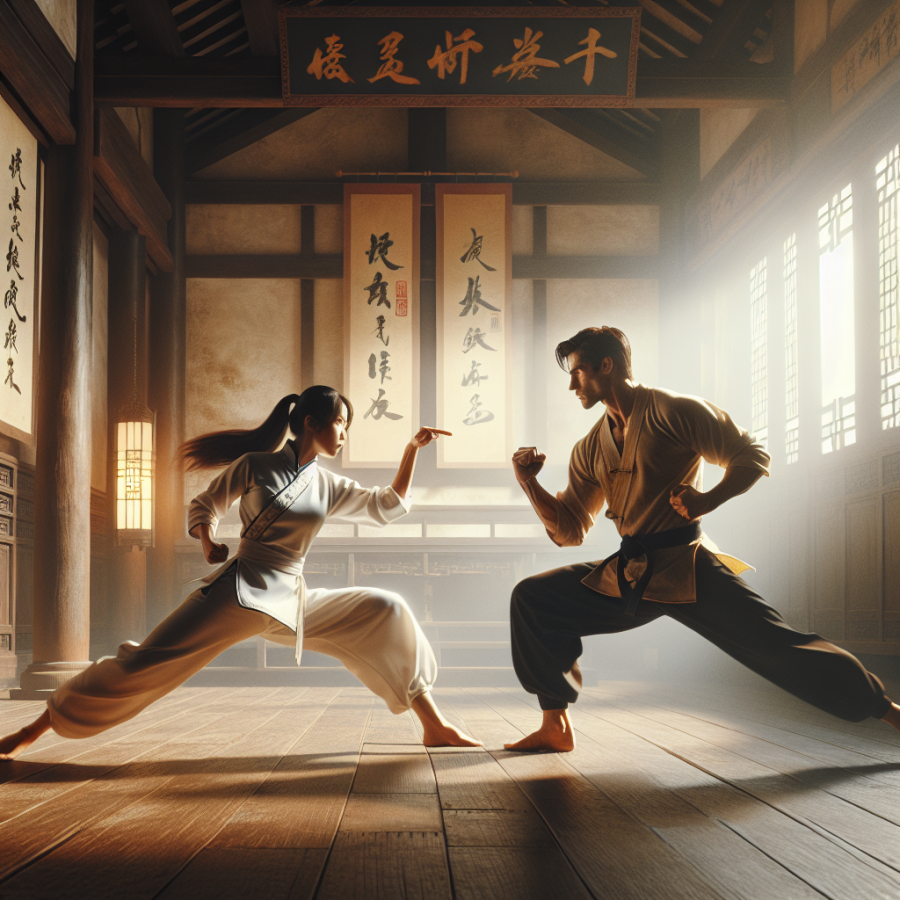The Dynamic Philosophy and Discipline Behind Kung Fu
Kung Fu, one of the oldest forms of martial arts, has roots that stretch back over 4,000 years to the Xia Dynasty in China. However, it isn't just a fighting technique - it is a philosophy, a discipline, a way of life. Understanding the ideals that Kung Fu upholds requires a deep dive into the intimate connections between Kung Fu, Chinese culture, Buddhism, and Taoism.
Kung Fu doesn't solely focus on the physicality or the violence often associated with martial arts. Instead, a great deal of emphasis is placed on embracing spirituality and developing moral values. Hence, the discipline behind Kung Fu is not just an empty shell – it is rich in stoicism and mindfulness, virtues deeply ingrained with Buddhist and Taoist philosophies. These philosophies become the guiding principles of life, leading practitioners toward personal enlightenment and a harmonious balance with nature.
In Chinese culture, Kung Fu is underscored by the precept of ‘Wu Wei,' a Taoist concept that means “action through inaction.” Basically, it abides by the principles of affecting things without interfering with their natural flow. This principle is dynamically present in Kung Fu - movements are fluid and adhere to the natural biomechanics of the human body. This principle both improves the effectiveness of the techniques and aids in preventing injury.
The philosophical aspect of Kung Fu is also reflected in the diverse styles and forms, each symbolizing the principles adhered to by its practitioners. Some styles mimic the inherent force and wisdom of animals, while others harness and channel elemental virtues of the surroundings, like rivers and mountains. All these styles convey the deep harmony Kung Fu has with nature, an idea that is steeped in Taoist doctrine.
Furthermore, the discipline behind Kung Fu emphasizes the cultivation of the self. The training is an introspective process that helps practitioners cultivate patience, resilience, humility, respect for others, and self-control. The rigors of training mould practitioners to endure hardships, remaining steadfast in the face of adversities - principles fundamental to good character.
In essence, the art of Kung Fu births from a complex unison of power, grace, philosophy, and discipline. It is dynamic, flowing with force and subtlety, embodying a profound sense of spirituality and morality.
Read also:
Developing a Successful Fitness Routine: A Comprehensive Guide
Tracing the Venerable Roots of Kung Fu through the Millenia
Martial arts enthusiasts worldwide often marvel at the physical and mental prowess required for mastering Kung Fu. Still, many are unaware of the rich history that lies at the root of this traditional Chinese martial art. Tracing back through millennia, Kung Fu has evolved alongside human civilization, providing a fascinating lens through which we can view the progression of culture, philosophy, and warfare.
The genesis of Kung Fu can be traced back to the primitive human societies of ancient China. During this time, surviving was the most pressing concern, which led to the development of basic hunting and defense skills. Over time, these skills evolved into organized systems of combat, using various weapons made from accessible materials. There is evidence that by the time of the Xia Dynasty (around 2070-1600 BC), a form of martial arts resembling modern Kung Fu was practiced alongside military training and fitness activities.
However, it was during the Shang Dynasty (1600-1046 BC) that Kung Fu truly started taking shape as a notable feature of Chinese culture. Terracotta warriors have been unearthed dating back to this period, brandishing weapons in stances suggesting martial art forms. The subsequent Zhou Dynasty (1046-256 BC) period laid a more profound footing for Kung Fu, with the period considered a martial golden age. A significant volume of literature discussing military philosophy and martial strategy was produced, including the seminal treatise -"The Art of War," by Sun Tzu.
The influence of Buddhism on Kung Fu began as early as the Han Dynasty (206 BC – 220 AD). During this time, the Silk Road facilitated the introduction of Buddhism from India, contributing towards the gradual spiritualization of Kung Fu. An example of this shift is Shaolin Kung Fu, which is believed to have been developed by an Indian monk named Bodhidharma, who preached a combination of Zen Buddhist principles and physical training for the monks of Shaolin Temple.
During the Tang Dynasty (618-907 AD), Kung Fu became woven into the very fabric of society. Kung Fu techniques were showcased in competitive events, attracting widespread attention, and martial arts schools sprung up across the empire, promoting Kung Fu training to a broader public audience.
In the Ming (1368–1644 AD) and Qing (1644–1912 AD) Dynasties, Kung Fu reached a pinnacle of development.




